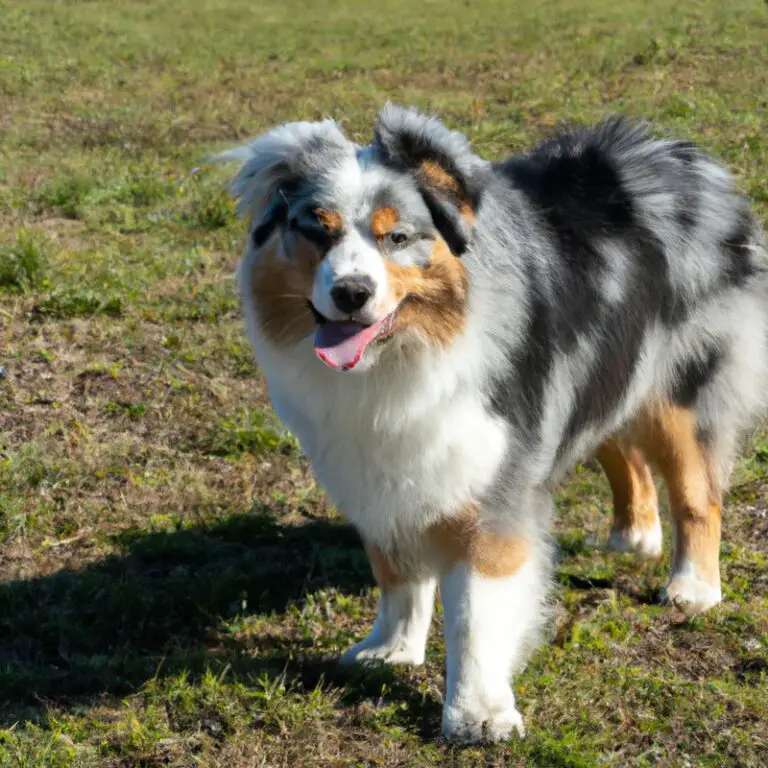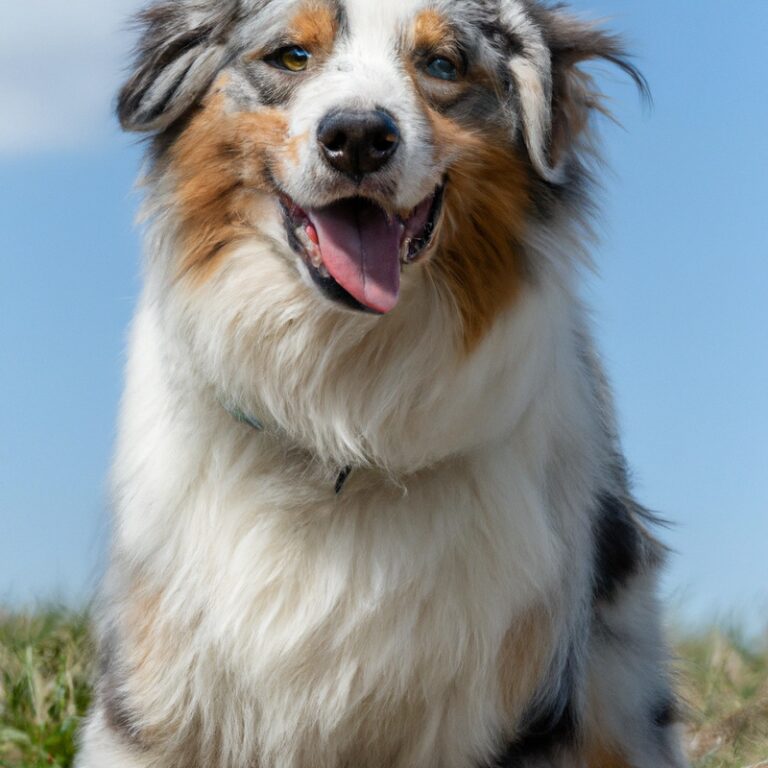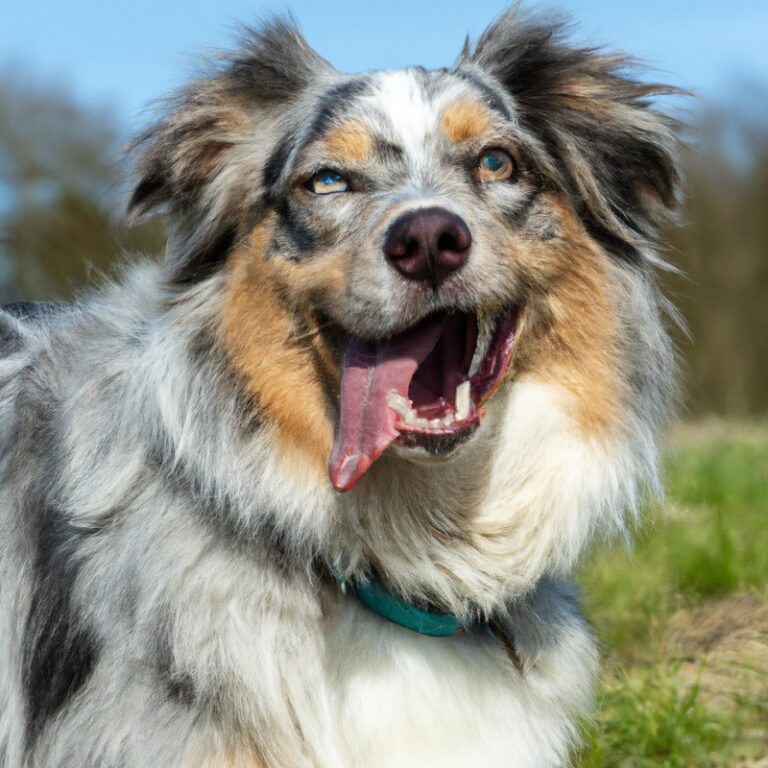How Do Australian Shepherds Handle Being Left Alone In a Fenced Yard?
Key Takeaways:
- Australian Shepherds can handle being left alone in a fenced yard, but may exhibit separation anxiety.
- Providing mental and physical stimulation can help alleviate anxiety in Australian Shepherds left alone in a yard.
- Training and socialization are important to ensure Australian Shepherds are comfortable when left alone in a fenced yard.
- Regular exercise and interactive toys can help Australian Shepherds cope with being left alone in a fenced yard.
Have you ever wondered how Australian Shepherds handle being left alone in a fenced yard? As a dog lover and owner of an Australian Shepherd myself, I understand the concerns and worries that can arise when leaving our furry friends behind.
These intelligent and energetic dogs are known for their loyalty and affection, but they can also be prone to separation anxiety.
In this article, I will explore the temperament of Australian Shepherds, discuss the causes and signs of separation anxiety, and provide practical tips and solutions to help these dogs cope with being left alone. Whether you’re a current Australian Shepherd owner or considering getting one, this article is a must-read for anyone who wants to ensure their pup’s well-being and happiness.
So, let’s dive in!
| Scenario | Behavior |
| Australian Shepherd left alone in a fenced yard | The Australian Shepherd breed tends to have some difficulty being left alone for extended periods in a fenced yard. They are known for their high intelligence and energy levels, and if not given enough mental and physical stimulation, they may exhibit destructive behavior such as digging, chewing, or barking excessively. |
Why Australian Shepherds are Prone to Separation Anxiety
Overview of Australian Shepherds’ Temperament
Australian Shepherds are known for their intelligent and energetic nature. They are highly active dogs that require mental and physical stimulation on a daily basis.
These dogs are loyal, affectionate, and thrive on human companionship.
They are also highly trainable and eager to please their owners. Australian Shepherds are herding dogs by nature, which means they have a strong instinct to work and a desire to be busy.
They excel in activities such as obedience training, agility, and herding trials.
Their intelligence and problem-solving skills make them quick learners and adaptable in various environments. However, due to their herding background, Australian Shepherds can be protective and reserved around strangers.
They may be wary of unfamiliar people or situations until they feel comfortable.
Early socialization is important to help them develop proper social skills and become well-rounded dogs. Additionally, Australian Shepherds can be prone to separation anxiety if left alone for long periods of time.
They form strong bonds with their owners and thrive on constant companionship.
Separation anxiety can manifest as destructive behavior, excessive barking, or other signs of distress. It’s important to gradually acclimate them to being alone and provide them with mental and physical stimulation when left alone.

Understanding Separation Anxiety in Australian Shepherds
Understanding separation anxiety in Australian Shepherds is essential for their overall well-being. Australian Shepherds are known for their loyal and sociable nature, which can make them more prone to developing separation anxiety.
This condition occurs when a dog becomes excessively distressed or anxious when left alone.
It can manifest in various ways, such as excessive barking, destructive behavior, or trying to escape. It’s crucial to recognize the signs of separation anxiety in Australian Shepherds and provide them with the support and care they need.
Tips to Help Australian Shepherds Cope with Being Left Alone
Establishing a Routine and Consistency
Establishing a routine and maintaining consistency is key when it comes to Australian Shepherds handling being left alone in a fenced yard. Dogs thrive on structure and predictability, so having a regular schedule can help alleviate anxiety and make them feel more secure.
To establish a routine, try to have set times for meals, exercise, and potty breaks.
This can help your Australian Shepherd anticipate what will happen throughout the day and create a sense of stability. Consistency is important not only in terms of timing but also in how you interact with your dog.
Use the same commands and cues consistently to reinforce their training and reinforce positive behavior.
Additionally, make sure to provide mental stimulation during the times when your Australian Shepherd is alone. This can include puzzle toys, interactive feeders, or frozen treats.
Mental stimulation helps keep their minds occupied and can prevent boredom or destructive behavior.
Remember, dogs are creatures of habit, so establishing a routine and consistency will go a long way in helping your Australian Shepherd feel more comfortable when left alone in the yard.
Proper Exercise and Mental Stimulation
Proper exercise and mental stimulation are essential for Australian Shepherds to handle being left alone. These intelligent and energetic dogs require plenty of physical activity to burn off their excess energy.
Regular walks, runs, or play sessions in the yard can help keep them physically fit and prevent destructive behavior.
Additionally, providing mental stimulation through interactive toys, puzzles, and training exercises can keep their minds engaged and prevent boredom. A tired and mentally stimulated Australian Shepherd is more likely to be content and relaxed when left alone.
Crate Training and Safe Spaces
Crate training and providing safe spaces are effective strategies to help Australian Shepherds cope with being left alone. Crate training involves introducing your dog to a crate as a secure and comfortable space.
Start by making the crate appealing with comfortable bedding and toys, and gradually increase the time your dog spends inside.
This can help create a sense of security and routine for your Aussie. Safe spaces, such as a designated room or gated area, offer a secure environment when you’re not at home.
Make sure the space is free of hazards, with access to water, toys, and a comfortable resting area.
Remember, consistency is key in both crate training and creating safe spaces. By providing a structured routine and positive reinforcement, you can help your Australian Shepherd feel more secure and comfortable when left alone.
Interactive Toys and Treats
Interactive toys and treats can be a great way to keep Australian Shepherds entertained and mentally stimulated when they are left alone in a fenced yard. These toys are designed to provide mental and physical stimulation for your dog, helping to alleviate boredom and prevent destructive behaviors.
There are many different types of interactive toys available for Australian Shepherds, such as treat-dispensing toys, puzzle toys, and interactive balls.
These toys require your dog to work for their treats or engage in play, keeping them occupied and entertained. Some toys can even be filled with peanut butter or other delicious treats to provide an extra incentive for your dog to play with them.
Interactive toys and treats are not only fun for your dog but can also help to reduce separation anxiety.
When your dog is focused on playing with these toys, they are less likely to become anxious or stressed about being alone. It can also help to establish a positive association with being left alone, as they will learn that it means they get to play with their favorite toys or enjoy a tasty treat.
When choosing interactive toys for your Australian Shepherd, make sure to select ones that are durable and suitable for their size and chewing strength.
It’s also a good idea to rotate their toys regularly to keep them interested and prevent boredom. In addition to interactive toys, you can also consider using interactive treat puzzles or food dispensers.
These toys require your dog to problem-solve and work for their food, providing mental stimulation and a rewarding challenge.
It’s important to monitor your dog while they are using these toys to ensure they are safe and not becoming frustrated or overwhelmed. Remember, interactive toys and treats are just one part of helping your Australian Shepherd cope with being left alone.
It’s important to establish a routine, provide proper exercise and mental stimulation, and consider crate training or creating a safe space for them.
If your dog experiences severe separation anxiety, it may be necessary to seek professional help from a veterinarian or animal behaviorist. By incorporating interactive toys and treats into your dog’s daily routine, you can help alleviate boredom and provide mental stimulation for your Australian Shepherd when they are left alone in a fenced yard.
Seeking Professional Help for Australian Shepherds with Severe Separation Anxiety
Identifying Signs of Severe Anxiety
Identifying signs of severe anxiety in Australian Shepherds is crucial for their well-being. Some common signs of severe anxiety include excessive barking or howling when left alone, destructive behavior, such as chewing or digging, intense pacing, and attempting to escape from the fenced yard.
Other signs may include excessive salivation, self-injury, urinating or defecating inside the house, or refusing to eat.
It’s important to take note of these signs and seek professional help if your Australian Shepherd is displaying severe anxiety symptoms.
Consultation and Evaluation with a Veterinarian or Animal Behaviorist
When dealing with severe separation anxiety in Australian Shepherds, it’s important to consult with a veterinarian or animal behaviorist. They have the expertise to evaluate your dog’s behavior and provide guidance on the best course of action.
During the consultation, they will ask you questions about your dog’s symptoms, home environment, and daily routine.
They may also observe your dog’s behavior firsthand. This evaluation will help them determine the severity of the anxiety and develop a personalized treatment plan.
It’s essential to seek professional help as they can offer effective solutions and support for both you and your furry friend.
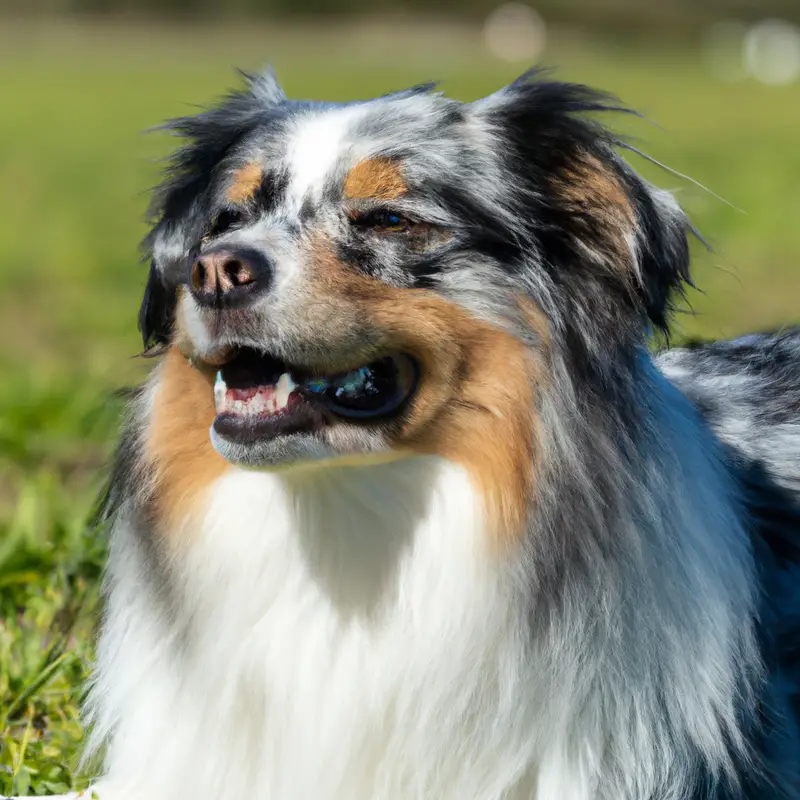
Treatment Options: Medication and Behavioral Modification
There are two main treatment options for Australian Shepherds with severe separation anxiety: medication and behavioral modification. Medication can be prescribed by a veterinarian to help manage the symptoms of anxiety.
This may include anti-anxiety medications or antidepressants, which can help your Australian Shepherd feel calmer and more relaxed when left alone.
It’s important to work closely with your vet to find the right medication and dosage for your dog. Behavioral modification involves working with a professional dog trainer or animal behaviorist to address the underlying causes of separation anxiety.
This may involve desensitization techniques, where your Australian Shepherd is gradually exposed to being alone for increasing periods of time.
Positive reinforcement and reward-based training can also help your dog associate being alone with positive experiences. Both medication and behavioral modification can be effective in treating severe separation anxiety in Australian Shepherds.
It’s important to remember that every dog is unique, so what works for one dog may not work for another.
Working closely with a veterinarian and/or a professional dog trainer will help you develop a personalized treatment plan for your Australian Shepherd.
Alternative Options for Australian Shepherds Left Alone
Doggy Daycare and Dog Walking Services
Doggy daycare and dog walking services are great options for Australian Shepherds who are prone to separation anxiety. These services provide companionship, exercise, and mental stimulation while you are away.
Doggy daycare facilities allow your dog to socialize and play with other dogs under supervision, while dog walking services ensure your dog gets regular exercise and attention.
These services can help alleviate separation anxiety and keep your Australian Shepherd happy and well-adjusted when left alone.
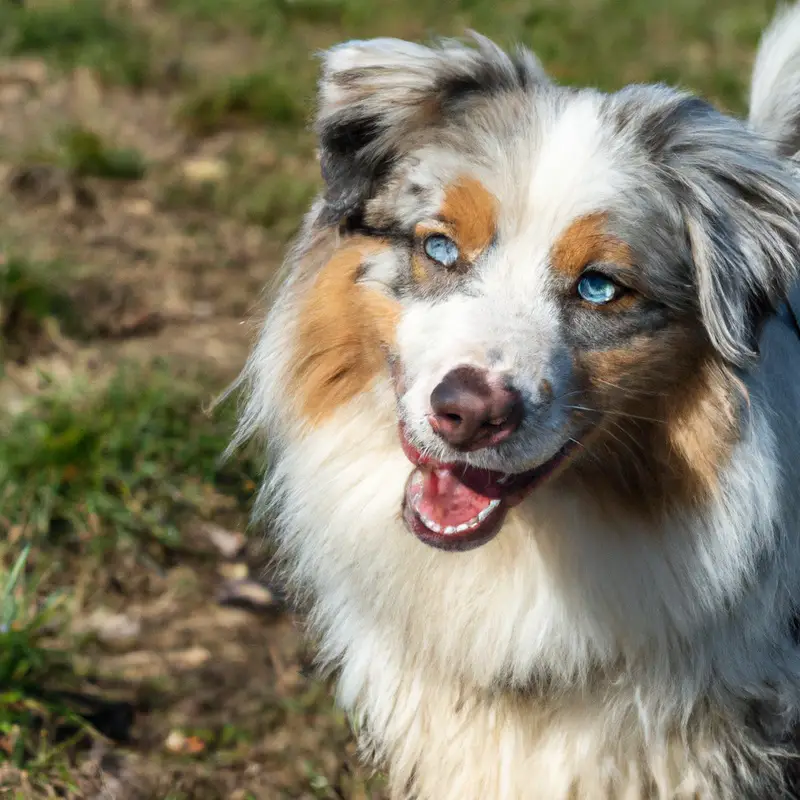
Hiring a Pet Sitter or Enlisting Help from Friends and Family
If you have an Australian Shepherd and need to leave them alone for extended periods, hiring a pet sitter or enlisting help from friends and family can be a great option. A pet sitter can come to your home and provide companionship, exercise, and even feed your Australian Shepherd while you’re away.
They can follow your instructions and maintain your dog’s routine.
Alternatively, asking friends or family members for help can provide your dog with familiar faces and keep them company during your absence. Just make sure to communicate your dog’s needs and routines to whoever is taking care of them.
Slowly Introducing Australian Shepherds to Being Alone
To slowly introduce Australian Shepherds to being alone, start by gradually increasing the amount of time they spend alone. Begin with short periods, such as just a few minutes, and gradually extend it over time.
This helps them build confidence and independence.
Create a designated space for your Australian Shepherd to be alone, such as a comfortable and safe room or crate. Make sure this area is filled with familiar toys, bedding, and treats to create a positive association.
Practice leaving and returning home multiple times throughout the day.
This helps normalize your comings and goings and reduces anxiety. Use positive reinforcement by rewarding your dog with treats or praise when they remain calm during your departures and arrivals.
Consider using anxiety-reducing techniques, such as leaving on soothing music or using calming pheromone diffusers in the designated space.
This can create a relaxing and comforting environment for your Australian Shepherd. Remember, every dog is unique, so be patient and adjust the process based on your individual dog’s needs and progress.
With time and consistency, your Australian Shepherd will become more comfortable with being alone.
Final Verdict
Australian Shepherds are prone to separation anxiety due to their sensitive and highly intelligent nature. When left alone in a fenced yard, they may exhibit destructive behaviors and become anxious.
To help them cope, it is crucial to establish a routine, provide ample exercise and mental stimulation, consider crate training, and offer interactive toys and treats.
In severe cases, seeking professional help from a veterinarian or animal behaviorist can lead to effective treatment options. Additionally, alternative options such as doggy daycare, pet sitters, and gradually introducing them to being alone can provide relief.
Trust the expertise shared here to ensure the well-being of your Australian Shepherd.





